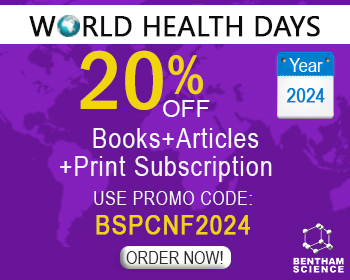Abstract
Background: Coinfection of Hepatitis C virus (HCV) with human immunodeficiency virus (HIV) has a higher risk of mortality than HCV or HIV monoinfection. HCV and HIV infections are specified by systemic inflammation, but the inflammation process in HCV/HIV coinfection is much complicated and is not well characterized.
Objective: The aim of this study was to analyze the expression of TLR-3, TLR-7, IL-10, IFN-1 (IFN-α, IFN-β), and TNF-α in HIV, HCV and HIV/HCV co-infected patients.
Methods: Forty-five patients including HIV group (n=15), HCV group (n=15), HIV/HCV coinfection group (n=15) and healthy control group (n=15) participated. Peripheral blood mononuclear cells (PBMCs) were obtained. PBMC-RNA, HCV and HIV RNA were extracted from all subjects and cDNA was synthesized. The viral load analyzed by reverse transcription-quantitative PCR (RT-qPCR), and the expression levels of IFN-α, IFN-β, TLR-3, TLR-7, TNF, and IL-10 mRNA were quantified in PBMCs.
Results: The levels of IFN-I, IL-10, and TNF-α were overexpressed in all patients’ groups (p<0.05), TLR-7 was upregulated in all groups, but this upregulation was not statistically significant (p>0.05). TLR-3 showed a decrease in all patient groups (p<0.05). The statistical analysis demonstrated that TLR-3 has a negative correlation with HIV load, whereas other genes positively correlated with HIV load. In addition, TLR-3, TNF-α, and IFN-I were negatively correlated with HCV load, whereas TLR-7 and IL-10 s were positively correlated with HCV load.
Conclusion: Our results showed a significant relationship between the expression level of innate immunity genes and inflammation in HCV, HIV, and HIV/HCV coinfected patients.
Keywords: HIV, HCV, Coinfection, TLR-3, TLR-7, IL-10, IFN-I, TNF-α.
[PMID: 31545776]
[http://dx.doi.org/10.1097/00002030-200308150-00009] [PMID: 12891066]
[http://dx.doi.org/10.1016/S1473-3099(04)01059-X] [PMID: 15219554]
[http://dx.doi.org/10.1007/s00705-016-2862-3] [PMID: 27132015]
[http://dx.doi.org/10.1053/j.gastro.2011.12.061] [PMID: 22537432]
[PMID: 23464383]
[http://dx.doi.org/10.1097/COH.0b013e32834bd365] [PMID: 22001892]
[http://dx.doi.org/10.1016/j.jhep.2007.11.009] [PMID: 18155314]
[http://dx.doi.org/10.5812/hepatmon.13699] [PMID: 24282427]
[http://dx.doi.org/10.1038/ni.1863] [PMID: 20404851]
[http://dx.doi.org/10.1073/pnas.0400937101] [PMID: 15034168]
[http://dx.doi.org/10.1126/science.1093620] [PMID: 14976262]
[http://dx.doi.org/10.1002/jmv.23985] [PMID: 24889558]
[http://dx.doi.org/10.1016/j.coi.2016.06.009] [PMID: 27366996]
[http://dx.doi.org/10.1016/j.coi.2014.12.003] [PMID: 25617674]
[http://dx.doi.org/10.1002/1873-3468.12827] [PMID: 28850669]
[http://dx.doi.org/10.1038/35099560] [PMID: 11607032]
[http://dx.doi.org/10.1038/ni886] [PMID: 12539043]
[http://dx.doi.org/10.1126/science.1087262] [PMID: 12855817]
[http://dx.doi.org/10.4049/jimmunol.169.12.6668] [PMID: 12471095]
[http://dx.doi.org/10.7314/APJCP.2015.16.5.1873] [PMID: 25773839]
[http://dx.doi.org/10.1038/nri3446] [PMID: 23681101]
[http://dx.doi.org/10.1615/CritRevImmunol.v32.i1.30] [PMID: 22428854]
[http://dx.doi.org/10.1146/annurev.immunol.19.1.683] [PMID: 11244051]
[http://dx.doi.org/10.1155/2015/320532] [PMID: 26494946]
[http://dx.doi.org/10.1007/s00705-017-3228-1] [PMID: 28181034]
[http://dx.doi.org/10.1093/infdis/jis926] [PMID: 23390300]
[http://dx.doi.org/10.1007/s13337-018-0424-x] [PMID: 29607354]
[http://dx.doi.org/10.1007/s00705-014-2133-0] [PMID: 25139545]
[http://dx.doi.org/10.1093/infdis/jis763] [PMID: 23390304]
[http://dx.doi.org/10.1186/1471-2172-9-28] [PMID: 18554409]
[http://dx.doi.org/10.1182/blood-2008-12-191296] [PMID: 19365081]
[http://dx.doi.org/10.1016/S0016-5085(00)70134-X] [PMID: 10734016]
[http://dx.doi.org/10.1002/hep.1840380412] [PMID: 14512873]
[http://dx.doi.org/10.3390/cells7110196] [PMID: 30400258]
[http://dx.doi.org/10.1038/nri2711] [PMID: 20154735]
[http://dx.doi.org/10.1128/AAC.01369-16] [PMID: 27799218]
[http://dx.doi.org/10.1182/blood-2008-04-151712] [PMID: 18824599]
[http://dx.doi.org/10.1016/j.coviro.2011.11.001] [PMID: 22323926]
[http://dx.doi.org/10.1016/j.jcv.2015.02.004] [PMID: 25766991]
[http://dx.doi.org/10.1111/j.1365-2893.2010.01390.x] [PMID: 21050341]
[http://dx.doi.org/10.1002/path.4187] [PMID: 23460469]
[http://dx.doi.org/10.1053/j.gastro.2004.08.067] [PMID: 15521019]
[http://dx.doi.org/10.1128/JVI.01388-08] [PMID: 18987152]
[http://dx.doi.org/10.1128/JVI.00324-06] [PMID: 17005663]
[http://dx.doi.org/10.1093/infdis/jis380] [PMID: 22693231]
[http://dx.doi.org/10.1038/nature03501] [PMID: 15793563]
[http://dx.doi.org/10.1111/j.1365-2249.2008.03646.x] [PMID: 18373699]
[http://dx.doi.org/10.1128/JVI.02630-08] [PMID: 19846517]
[http://dx.doi.org/10.1097/00000658-199906000-00011] [PMID: 10363898]




























